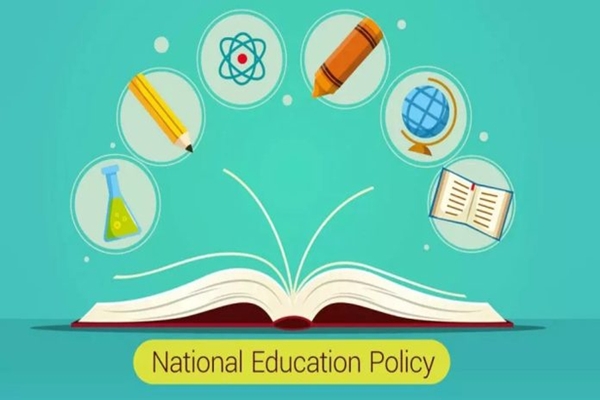Five Years of the National Education Policy 2020

- 05 Aug 2025
In News:
The National Education Policy (NEP) 2020, India’s third education policy since Independence, was envisioned as a transformative roadmap to make India a “global knowledge superpower.” Five years since its launch, the policy has driven important reforms in both school and higher education. However, progress has been uneven—while curriculum redesign, early childhood education, and digital learning have taken shape, federal tensions, institutional inertia, and funding constraints continue to slow its full realization.
Key Gains in School Education
The NEP replaced the 10+2 structure with a 5+3+3+4 model (foundational, preparatory, middle, secondary). The National Curriculum Framework (2023) set competency-based outcomes, and NCERT released new textbooks for classes 1–8, integrating subjects such as history and geography into a single volume.
Early childhood care and education (ECCE) has gained traction through the JaaduiPitara kits and a national ECCE curriculum. Delhi, Karnataka, and Kerala have enforced the minimum age of six for class 1. However, improving Anganwadi training and infrastructure remains critical.
Under NIPUN Bharat (2021), literacy and numeracy by class 3 became a national focus. Yet, survey data show proficiency levels at 64% (language) and 60% (math)—progressive but below NEP’s universal goals.
Higher Education Reforms
One of NEP’s boldest ideas, the Academic Bank of Credits (ABC) and National Credit Framework (NCrF), introduced flexibility with multiple entry-exit options: a certificate after one year, a diploma after two, and a four-year degree. While nearly 90% of HEIs report multidisciplinary curricula, only 36% have implemented multiple entry-exit, and just 64% maintain ABC records, indicating patchy adoption.
The Common University Entrance Test (CUET), introduced in 2022, streamlined admissions by replacing multiple entrance exams. Global outreach expanded, with IIT Madras (Zanzibar), IIT Delhi (Abu Dhabi), and IIM Ahmedabad (Dubai) opening campuses abroad, while foreign universities such as the University of Southampton entered India.
Digital education emerged as a strong adoption area: 96% of HEIs use SWAYAM/DIKSHA, and 94% invested in digital infrastructure. Yet, equitable access and integration of MOOCs into degree programs remain challenges.
Reforms in Progress
- Board exams: From 2026, CBSE will allow class 10 students to appear twice a year to reduce stress.
- Holistic assessment: PARAKH has developed competency-based report cards, though most boards are yet to implement them.
- Four-year undergraduate degrees: Adopted by some central universities and Kerala, but slowed by faculty shortages and weak infrastructure.
- Mother tongue instruction: Encouraged till class 5, with NCERT preparing multilingual textbooks.
Sticking Points and Bottlenecks
Some reforms remain stalled:
- Three-language formula has been rejected by Tamil Nadu as linguistic imposition.
- Teacher education reform lags, with the National Curriculum Framework for Teacher Education still pending.
- Higher Education Commission of India (HECI), meant to replace UGC, remains in draft stage.
- Breakfast alongside midday meals, recommended by NEP, was rejected due to financial constraints.
Federalism poses a key hurdle. Kerala, Tamil Nadu, and West Bengal refused to adopt PM-SHRI schools, citing central overreach, leading to funding freezes under Samagra Shiksha. Karnataka oscillated—adopting and later scrapping the four-year UG model—while pursuing its own state education policy.
Conclusion
Five years on, NEP 2020 has delivered structural reforms in school curricula, foundational learning, higher education flexibility, and digital adoption. Yet, its transformative potential remains unrealized due to limited faculty capacity, uneven state cooperation, and financial bottlenecks. For NEP to succeed, the Union and states must collaborate, ensuring adequate funding, teacher training, and institutional autonomy. Without resolving these foundational issues, the NEP risks remaining a vision more on paper than in classrooms.
